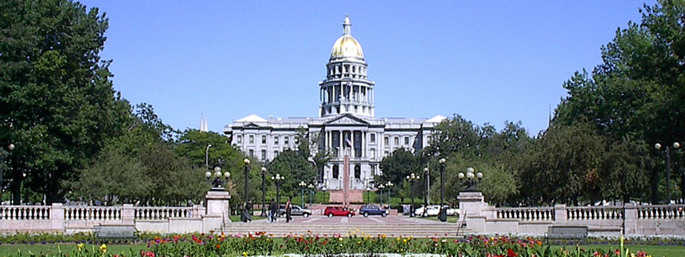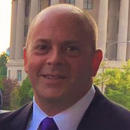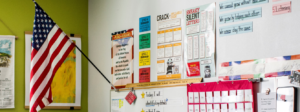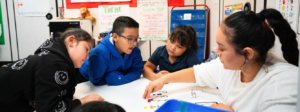Ah, Washington, D.C.: Where good ideas go to die. It’s easy to look at Congress and think partisan gridlock will forever stall all meaningful progress on education policy. The days when Sen. Ted Kennedy and then-President George W. Bush came together to pass the No Child Left Behind Act seem to be a distant memory of a bygone era.
But there’s a model for the way forward, once you look outside the beltway: the states.
In the seven years that we have been waiting for Congress to reauthorize ESEA, state legislatures, governors and boards of education have debated and passed dozens of education bills and adopted hundreds of regulatory changes—everything from aligning licensure renewal or advancement to performance in Rhode Island and Tennessee to seniority-based layoff reforms in Indiana and Louisiana. At least 35 states now include student learning or growth as a significant factor in teachers’ performance evaluations, and 22 of them have adjusted tenure rules to allow dismissing teachers for persistently poor performance.
In many ways, it’s appropriate that states have taken the lead: They regulate the most important education policies and regulations, those that can aide or hinder efforts to improve outcomes for kids. Then, they are responsible for implementing, monitoring and supporting those policies. And they provide the majority of funding to public schools, about 83 cents of every dollar spent.
To be sure, Washington has played some role in all this. Race to the Top funding and ESEA waivers have served as strong incentives. But it was the reaction to these incentives that mattered: State leaders responded with, in some cases, fairly bold bipartisan policy solutions that put schools in better position to identify, support and grow highly effective teachers. And they did that by approaching education as the kitchen-table issue it is.
In most states, we still have “citizen legislators,” who are accessible and immediately accountable to those they serve. Unlike lawmakers in D.C., state legislators and their families often go to the same grocery stores, houses of worship and schools as the folks who voted for them. An abstract D.C. argument about the proper role of the federal government is often, at the local level, a conversation about how our kids are doing at our schools.
Building on that shared experience can have powerful effects. In Colorado, Sen. Mike Johnston, a Democrat, partnered with Sen. Nancy Spence, a Republican, and built a coalition of lawmakers, advocates, parents and students to pass the Great Teachers and Leaders Act. His argument: great teachers and leaders can make a transformative difference for kids. The law created a new definition of teacher effectiveness, required evaluations for teachers and principals that focus on that standard and it established mutual consent hiring policies for public schools.
And in New Jersey, Democratic Sen. Teresa Ruiz built a bipartisan coalition and won the public support of GOP Gov. Chris Christie to pass the TEACHNJ Act, New Jersey’s most extensive education reforms in more than 100 years. Her argument: a stronger profession means more learning for kids, particularly in low-income communities. The law established a new teacher evaluation system and ties tenure to teachers’ performance in the classroom—controversial moves that were nonetheless passed unanimously.
What do these success stories have in common? The lawmakers were strategic in their approach to crafting legislation and building bipartisan support. They were deliberative and clear in their goals and the plan to implement the changes. They took the time to research and craft commonsense policies based on the latest learning from the field; for example, Ruiz held public hearings on the issue for more than a year. And they were intentional and sophisticated in their efforts to educate the public and fellow policy makers; for example, Johnston and fellow supporters tightly controlled the messaging, empowered coalitions to lead the advocacy and executed a sophisticated lobbying strategy.
I’m not delusional enough to suggest that state capitols are a bastion of utopian bipartisan bliss. The more blue or red the state, the tougher it always is for the minority party to assert itself. But state legislatures across the country have spent more time debating details to find areas of consensus, while their counterparts in D.C. seem to spend more time stalling, politicking and mugging for the camera—with messages for the small minority of far-right or far-left voters who will vote in their next primary.
It’s a wasted opportunity for Congress, which is suffering from single-digit approval ratings and sorely needs to show an ability to act. While motivations may differ, there is common ground to be found among Democrats, who want well-funded public education systems as a means of social mobility, and Republicans, who demand a return on the significant investment in education. That’s what brought Kennedy and Bush together, once upon a time.
Taking the next steps in updating and aligning education policy—and getting it right in both policy and implementation—are daunting challenges, to be sure. But I’m confident in the states: There remains a majority of leaders who are willing to work in a bipartisan manner, and who believe there is an important role for the state in public education. Combine that with the willingness to act, and you’ve got cause for optimism.








